10 Rare Depression Glass Patterns That Collectors Still Hunt For
Depression glass is a type of colorful glassware that gained popularity during the Great Depression in the 1930s. Known for its affordable price and vibrant hues, it quickly became a favorite among households during that time. These glass pieces were mass-produced, but some patterns have become highly sought after by collectors today. Over the years, collectors have developed a strong appreciation for the craftsmanship and history behind these glassware patterns.
This post may contain affiliate links, which helps keep this content free. Please read our disclosure for more info.
Hocking Glassware’s Miss America Pattern
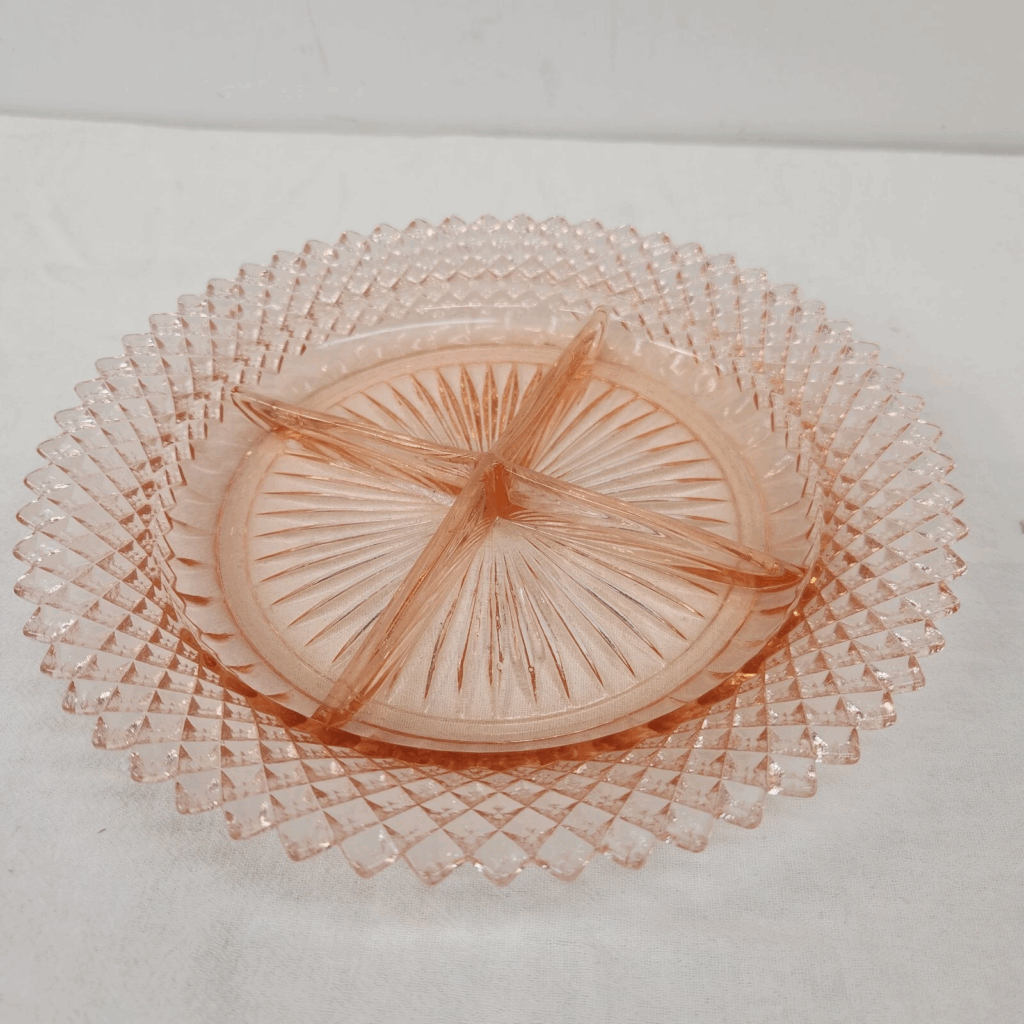
The Miss America pattern was introduced by Hocking Glass in 1934, featuring raised floral designs and a scalloped rim. This pattern is known for its delicate, feminine design and was produced in a soft pink hue. Market value for this pattern typically ranges from $50 to $200, with serving dishes and larger pieces fetching the highest prices. Collectors appreciate the intricate floral motifs, which make each piece visually captivating. Its connection to the Art Deco period further adds to its historical significance.
Originally sold as part of a larger dinnerware set, the Miss America pattern can be found in everything from cups to bowls to plates. Items from this collection that are in pristine condition are especially desirable to collectors. The soft pink color, while common in Depression glass, stands out in this particular design, giving it a distinct look. The pattern’s popularity among collectors has been steadily growing. Whether you are new to collecting or a seasoned enthusiast, this pattern remains a highly coveted piece.
Pink Poppy by Jeannette Glass
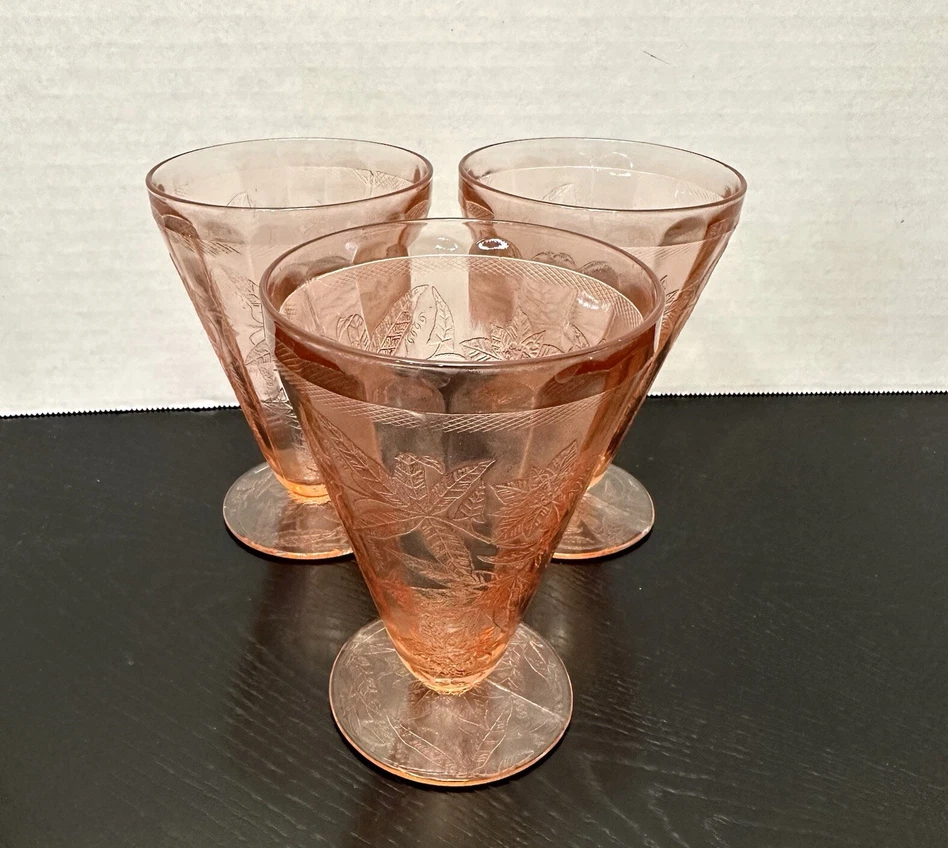
Released in 1930 by Jeannette Glass, the Pink Poppy pattern features vibrant poppy flowers in soft pink hues. This stunning pattern was designed for its elegant appearance and was marketed as both affordable and beautiful. Today, collectors can expect to pay between $40 and $150 for a well-preserved piece of this pattern. The design’s delicate flowers and bold color make it one of the most visually striking Depression glass patterns. Its combination of artistry and functionality ensures it remains in high demand.
The Pink Poppy pattern includes a variety of pieces such as bowls, serving dishes, and cups. It is especially valued for the clarity of its pink glass, which can sometimes range in intensity depending on age. Over the years, this pattern has earned a reputation as one of Jeannette Glass’s standout designs. Because of its popularity during the Great Depression, many pieces can still be found in good condition. Collectors love this pattern for its beauty and its connection to the era.
Anchor Hocking’s Star of David Pattern
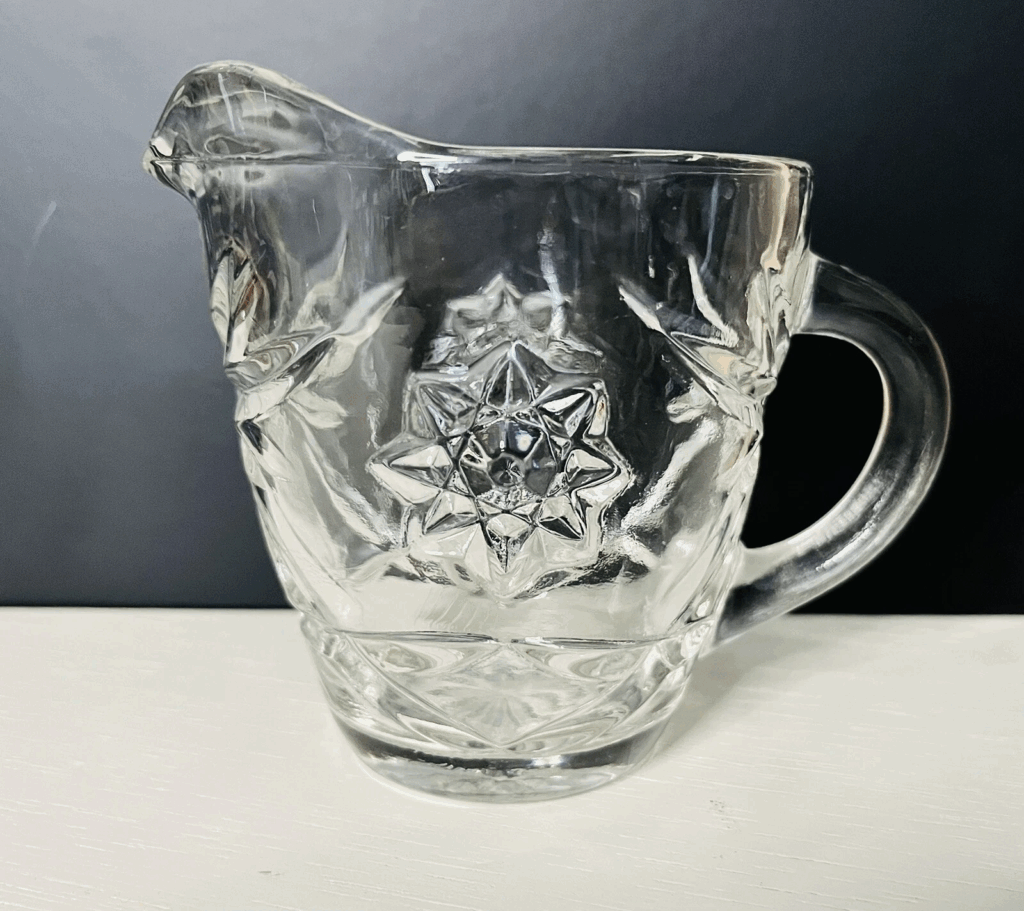
Introduced by Anchor Hocking in the 1930s, the Star of David pattern features geometric shapes and bold star motifs. This design was produced in several colors, but the most sought-after are the green and pink variations. Vintage pieces from this pattern typically fetch between $30 and $150, depending on condition and the specific piece. The intricate star designs have made it a favorite among collectors of Depression glass. Its lasting popularity is due to its unique design, which still captures the charm of the era.
The Star of David pattern is often found in serving pieces like bowls, plates, and candy dishes. The glassware was marketed as affordable luxury for American families, making it both functional and collectible. The clarity and depth of the color are key factors in determining the value of a piece. Items that remain in excellent condition, with no chips or cracks, can be worth significantly more. This pattern’s timeless appeal keeps it in demand among collectors today.
Cherry Blossom by Hocking Glass
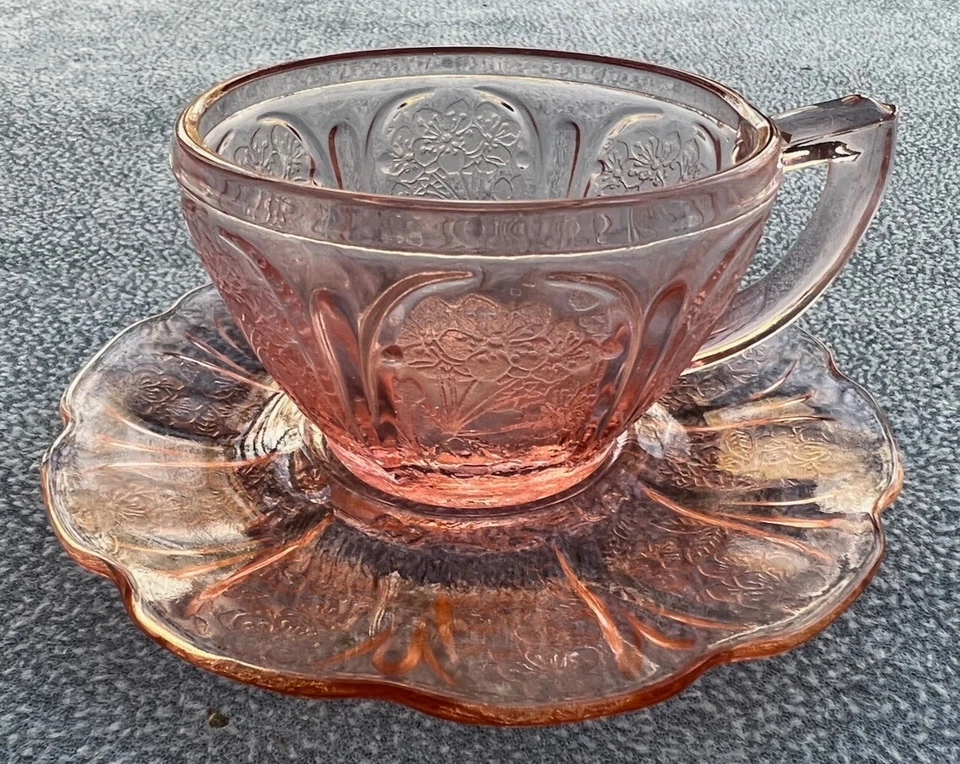
Introduced in 1930, the Cherry Blossom pattern is recognized for its charming floral motif, which features clusters of blossoms. This pattern was initially offered in shades of pink, green, and clear glass, with the pink variation being the most sought after. The market value for these pieces typically ranges from $50 to $250, depending on the rarity and condition of the item. The Cherry Blossom pattern is appreciated for its timeless design and elegant simplicity, making it a top choice for collectors.
This pattern was created for dinnerware, including plates, bowls, and serving pieces, but is also found in depression glassware sets. Over time, the Cherry Blossom pattern has become one of Hocking Glass’s most iconic designs. The delicate floral pattern evokes a sense of spring and renewal, making it a favorite among vintage glass collectors. Pieces in excellent condition, especially those with clear, undamaged glass, are especially prized. This enduring pattern remains a staple in the world of Depression glass collecting.
Mayfair by Hocking Glass
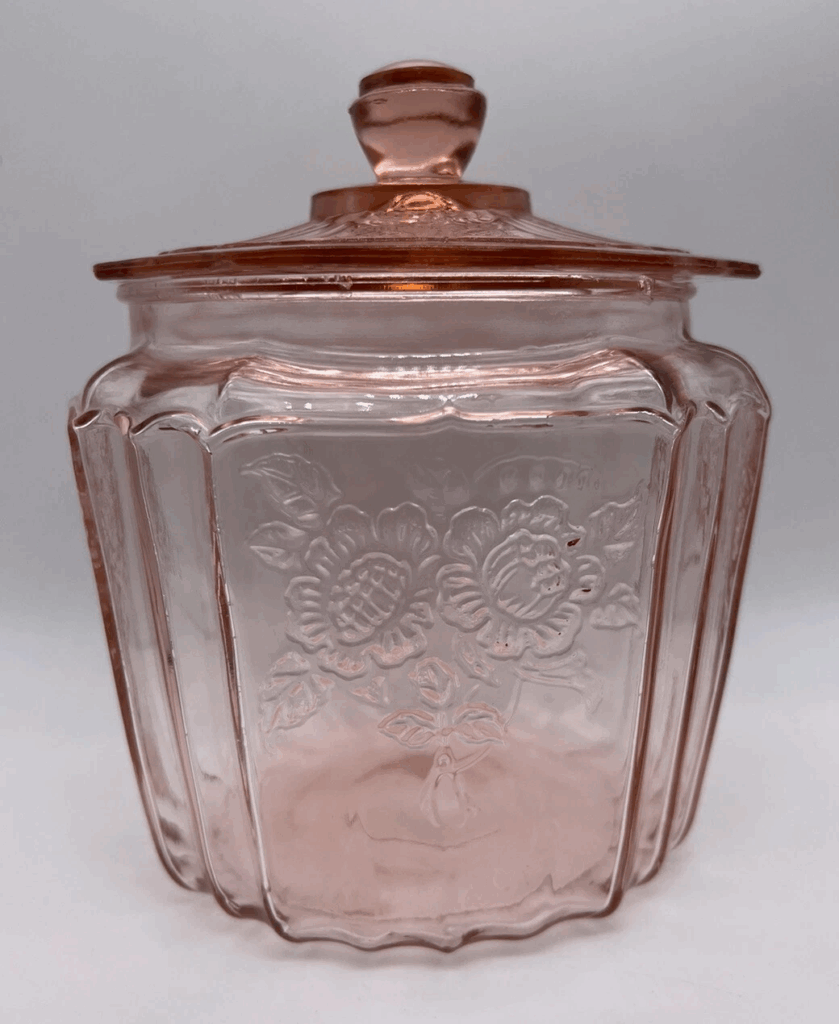
Hocking Glass introduced the Mayfair pattern in the early 1930s, known for its elegant geometric design. The pattern features scalloped edges and a raised dot motif, which has made it a favorite among vintage glass collectors. The value of a Mayfair piece typically ranges from $40 to $150, with rare colors like pink and green commanding higher prices. Collectors appreciate the blend of simplicity and elegance in the design, which makes it versatile for a variety of settings.
The Mayfair pattern was produced in a variety of items, including glasses, bowls, and platters. The pieces in this pattern are recognized for their fine craftsmanship, which was a hallmark of Hocking Glass during the Depression era. Known for being sturdy yet graceful, the Mayfair pieces were designed to be both functional and visually appealing. Today, these items remain popular due to their affordable yet beautiful design. Whether you’re looking for dinnerware or decorative pieces, the Mayfair pattern remains a classic choice among collectors.
Early American by Federal Glass
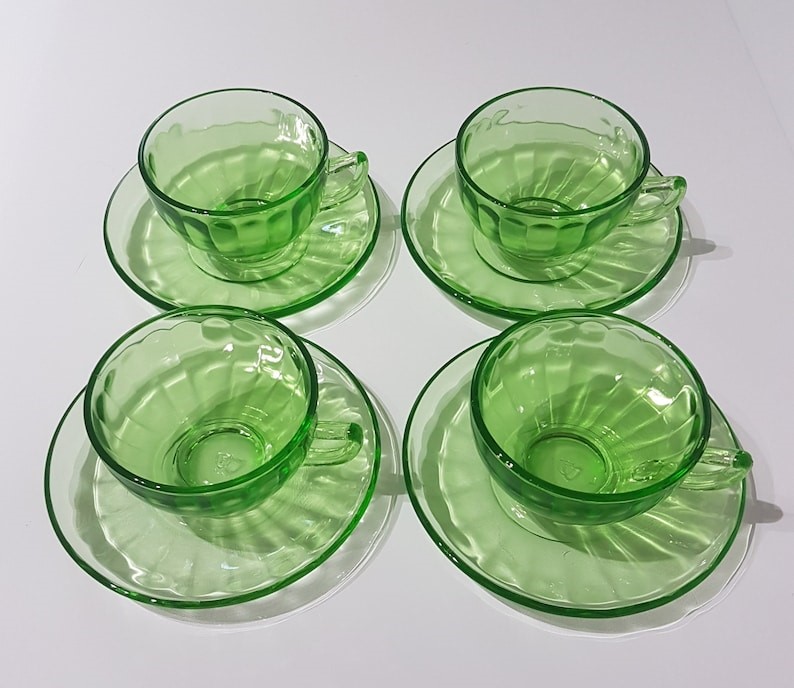
The Early American pattern by Federal Glass is characterized by its classic, Americana-inspired designs that feature stars, eagles, and shields. Produced in the 1930s, it quickly became a favorite for patriotic-themed gatherings and everyday use. The current value of these pieces can range from $50 to $200, with certain items, especially large serving pieces, fetching higher prices. The pattern’s appeal lies in its historical charm and its ability to evoke a sense of American heritage.
Most pieces in the Early American pattern are made from clear glass, with some variations available in different colors. Items such as serving trays, cups, and bowls from this collection are highly collectible due to their unique, vintage designs. The pattern reflects a time of national pride, which is why it remains so popular among collectors today. While not as common as some other Depression glass patterns, the Early American collection still commands attention for its quality and distinctive designs. Its historical significance only adds to its value in the collector’s market.
Cabbage Rose by Hocking Glass
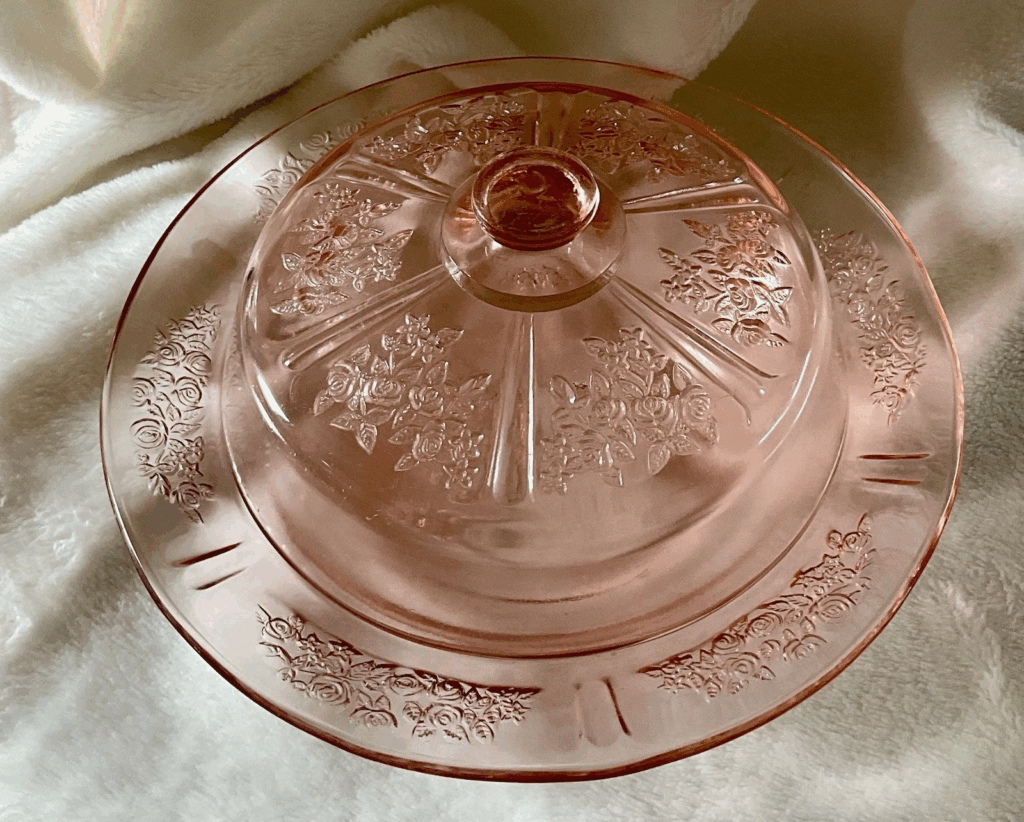
The Cabbage Rose pattern by Hocking Glass, introduced in the late 1930s, is beloved for its soft floral design. Featuring roses, leaves, and a delicately ribbed base, this pattern is highly desirable among vintage glass collectors. The market value for these pieces typically ranges from $50 to $175, with rare and well-preserved items fetching even higher prices. Its romantic floral design and subtle coloration make it a timeless choice for those looking to add a vintage touch to their collection.
This pattern was produced in several colors, including green, pink, and clear glass, though the pink pieces are typically the most sought-after. The design itself was intended to evoke a sense of elegance and charm, ideal for Depression-era households. Pieces from the Cabbage Rose pattern are found in a wide variety of items, including pitchers, bowls, and trays. The popularity of this pattern among collectors has not diminished over the years. If you come across a Cabbage Rose piece in excellent condition, it is a valuable find.
Waffle by Hocking Glass
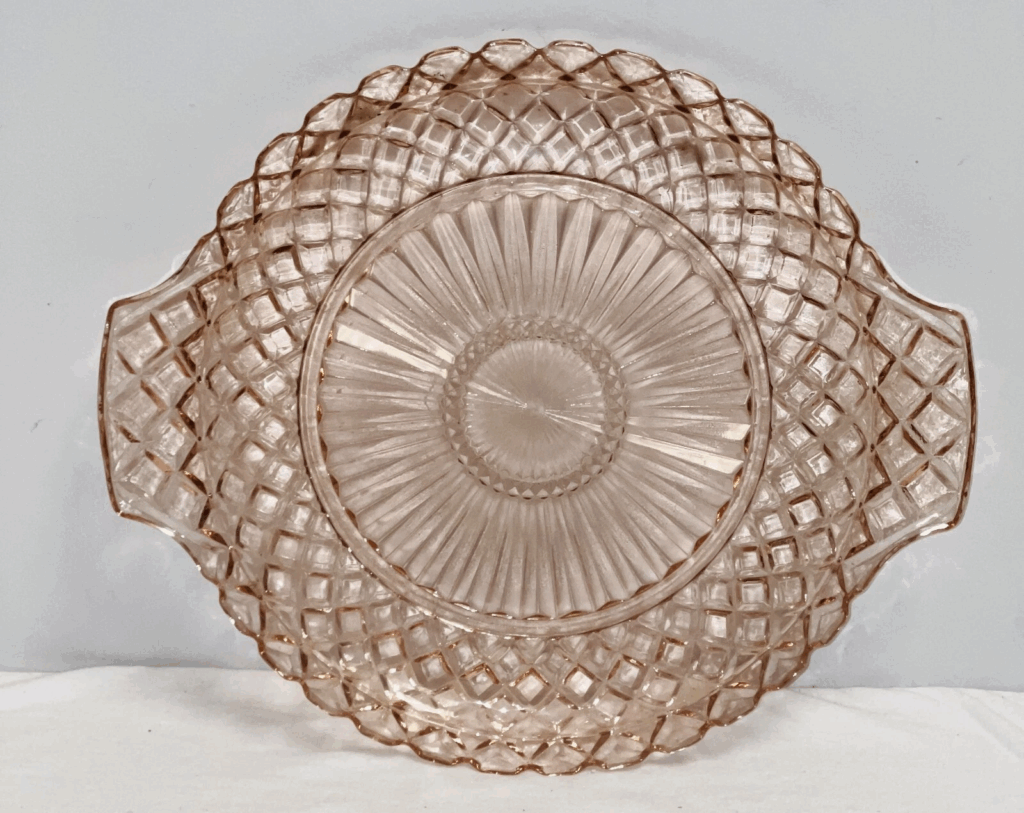
The Waffle pattern from Hocking Glass, introduced in the 1930s, is known for its textured surface resembling a waffle pattern. This unique design was intended to provide both beauty and functionality, as it allowed for a more durable surface. Depending on the piece’s condition, the value of Waffle glassware typically falls between $30 and $100, with rare colors or hard-to-find pieces reaching higher prices. The pattern’s texture and durability make it a favorite among those looking for vintage pieces that stand out in their collection.
The Waffle pattern is most commonly found in bowls, plates, and cups, with the design adding a distinct touch to any set. It was produced in a variety of colors, but the clear and green glass varieties are the most well-known. The texture of the glass gives it a visual appeal while also making it more practical for daily use. Its affordability and aesthetic simplicity make it a popular choice for those beginning their Depression glass collections. Today, the Waffle pattern remains a highly collectible set for those interested in vintage glassware.
Hobnail by Fenton Glass
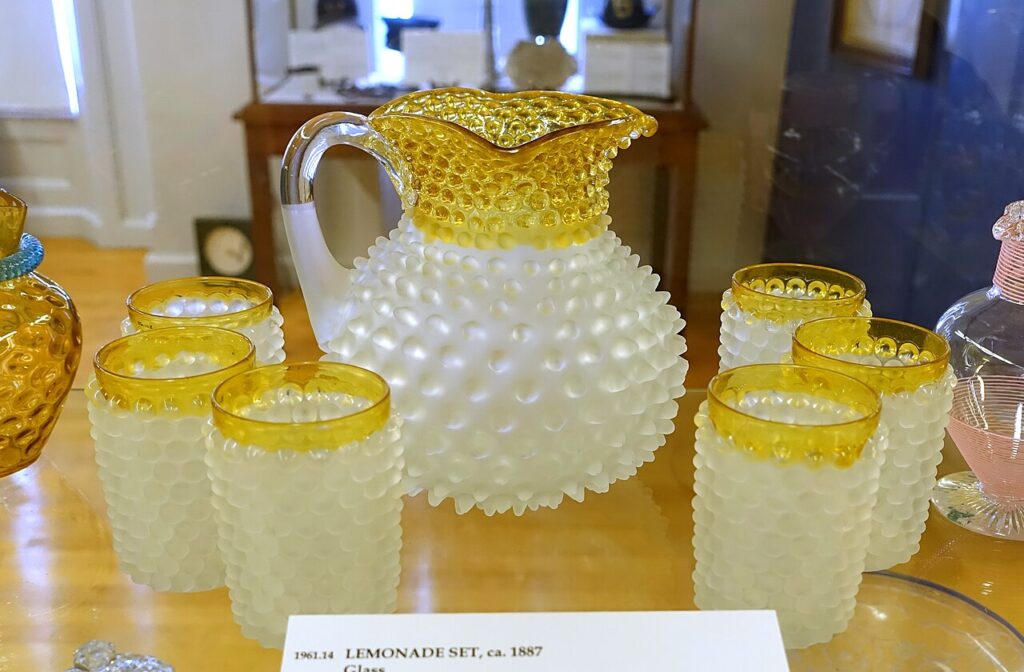
Fenton’s Hobnail pattern, first introduced in 1939, quickly became one of the most iconic and beloved Depression glass patterns. Its distinctive design features a pattern of small, raised hobnails across a smooth surface, which is both visually appealing and functional. Pieces from this pattern, especially the milk glass varieties, can range from $30 to $100 in value, depending on condition and rarity. The pattern is popular for its versatility, as it can be used for both decorative and functional purposes.
Hobnail glassware is typically found in a wide variety of items, from bowls and vases to lamps and pitchers. The milk glass pieces are particularly valuable, as they represent a significant portion of the pattern’s production. Collectors often seek out rare colors and pieces in excellent condition. The charming, textured appearance of Hobnail has kept it highly desirable among vintage glass collectors for decades. Today, it remains a staple in many collections due to its timeless beauty and collectibility.
Beaded Edge by Jeannette Glass
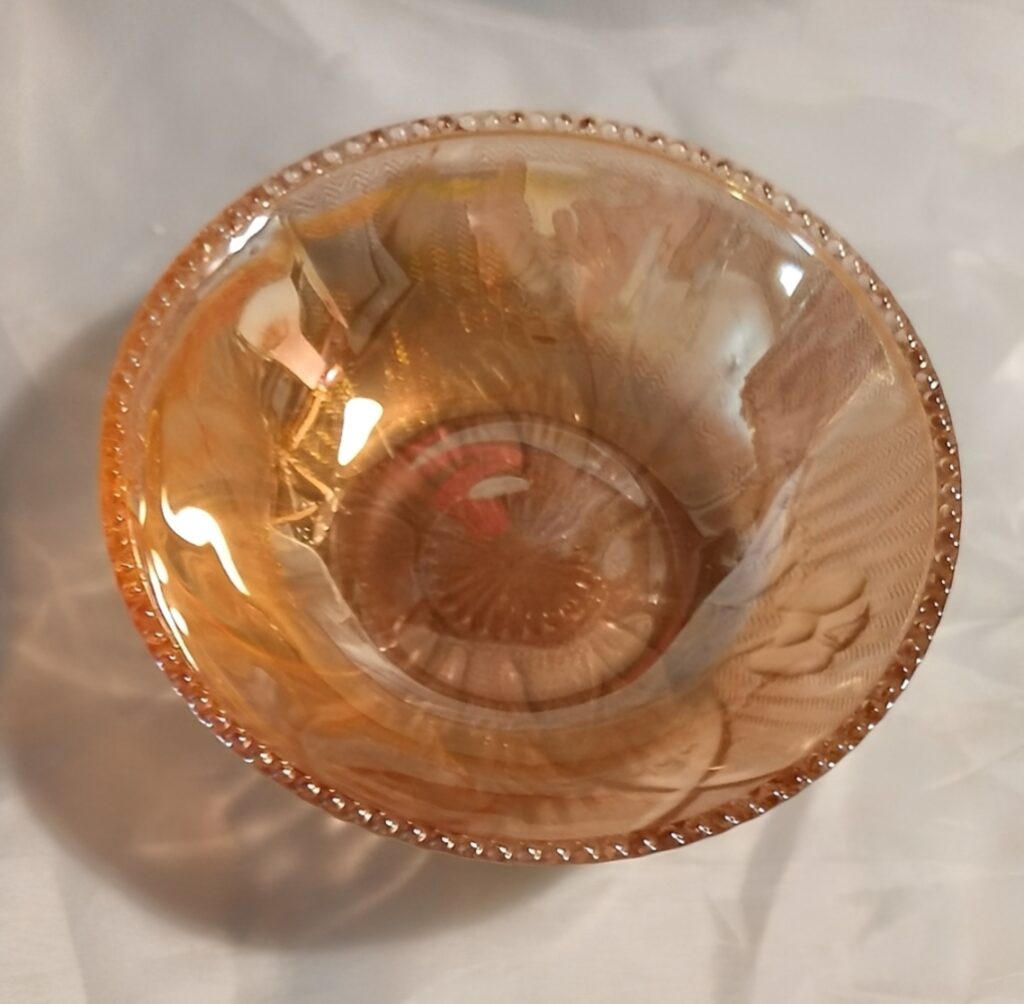
The Beaded Edge pattern by Jeannette Glass was introduced in the early 1930s and is known for its simple yet elegant design. The pattern features a delicate beaded edge around the rim of each piece, adding a refined touch to the otherwise minimalist design. Pieces from this collection are valued between $30 and $100, with more rare pieces reaching higher prices. Collectors are drawn to the elegant simplicity and practical use of the pattern, which remains highly functional in modern-day homes.
Beaded Edge glassware was used for a wide variety of items, including bowls, plates, and cups. The pattern’s subtle detailing makes it an enduring classic in the world of Depression glass. Although less intricate than some other patterns, its understated beauty has made it a popular choice for collectors seeking elegant, everyday glassware. The pattern’s continued popularity is a testament to the lasting appeal of Jeannette Glass. Vintage Beaded Edge pieces remain a valuable part of any Depression glass collection.
This article originally appeared on Avocadu.
